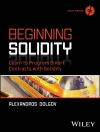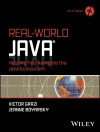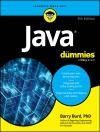Whether it’s software, a cell phone, or a refrigerator, your customer wants – no, expects – your product to be easy to use. This fully revised handbook provides clear, step-by-step guidelines to help you test your product for usability. Completely updated with current industry best practices, it can give you that all-important marketplace advantage: products that perform the way users expect. You’ll learn to recognize factors that limit usability, decide where testing should occur, set up a test plan to assess goals for your product’s usability, and more.
Jadual kandungan
Acknowledgments xi
Foreword xxix
Preface to the Second Edition xxxiii
Part One Usability Testing: An Overview
Chapter 1 What Makes Something Usable? 3
Chapter 2 What Is Usability Testing? 21
Chapter 3 When Should You Test? 27
Chapter 4 Skills for Test Moderators 45
Part Two The Process for Conducting a Test
Chapter 5 Develop the Test Plan 65
Chapter 6 Set Up a Testing Environment 93
Chapter 7 Find and Select Participants 115
Chapter 8 Prepare Test Materials 153
Chapter 9 Conduct the Test Sessions 201
Chapter 10 Debrief the Participant and Observers 229
Chapter 11 Analyze Data and Observations 245
Chapter 12 Report Findings and Recommendations 269
Part Three Advanced Techniques
Chapter 13 Variations on the Basic Method 293
Chapter 14 Expanding from Usability Testing to Designing the User Experience 315
Afterword 333
Index 335
Mengenai Pengarang
Jeffrey Rubin, author of the first edition of this book, has more than 30 years of experience as a human factors and usability research consultant and lecturer. A pioneer in the field of usability testing, he has consulted for leading companies worldwide.
Dana Chisnell is an independent user researcher and usability consultant. She has done usability, user interface design, and technical communications consulting and development since 1982.
Companion Web site
Go to www.wiley.com/go/usabilitytesting to find additional case examples, samples, and templates












